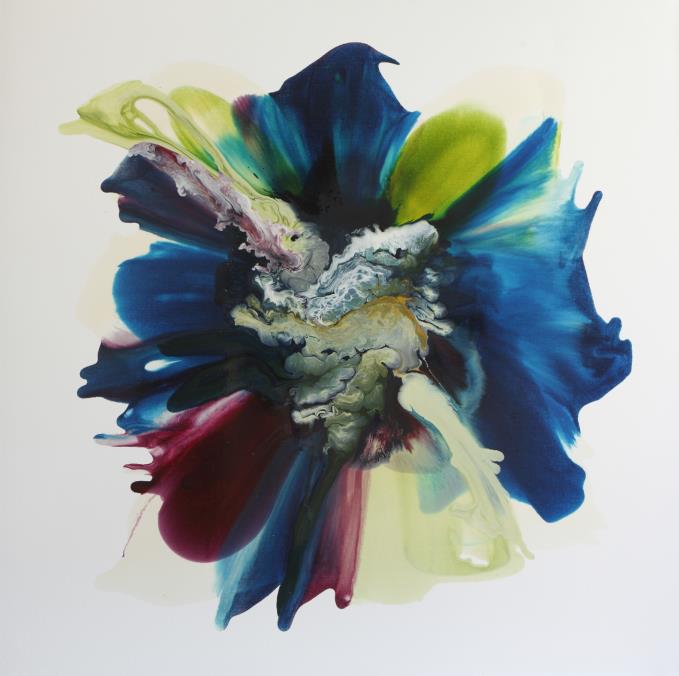Promotion
YOU’VE landed that dream abode, trawled antique markets and thrift stores for all the essentials and finally have a freshly painted patch of wall space just crying out for a piece of art that really says ‘you’. No clue where to begin? Take Buy Art Fair’s curated tips for the right first steps to bring art to the home.
Don’t assume that, if there isn’t a price-list, the work will be hugely expensive
“More people in the North are buying art than ever before”, says Thom Hetherington, CEO of Buy Art Fair. “Our latest visitor survey shows that 18% of people made their first ever art purchase at the fair but they don’t tend to stop there: 47% say they own six or more pieces.
“Buying art was always seen as a difficult and intimidating process, but 58% of our fair-goers say events like Buy Art Fair were key to increasing their interest and confidence in art. Two thirds of visitors said they bought a piece purely because they ‘liked it’, so it can be as simple as that. If you like it and you can afford it, then buy it!”
For the more cautious shopper, here are Buy Art Fair’s top tips to getting started:
Art on a budget – what to buy
1 Collect limited edition prints and multiples. Cheaper than one-off originals, these will make your budget go further and enable you to collect more ‘established’ artists.
2 Sometimes you can buy direct from artists if they’re not already represented by a gallery. Buy Art Fair has an entire studio dedicated to unrepresented artists.
3 Public galleries often sell editions by high profile artists at less than ‘market price’ to help fundraise for their exhibitions and programmes. At Buy Art Fair you will find stands from the Royal Academy of Art, Liverpool Biennial, Walker Art Gallery and BALTIC Centre of Contemporary Art.
 Jane Emberson's Calantha will set you back £1650 at Buy Art Fair
Jane Emberson's Calantha will set you back £1650 at Buy Art FairFirst time buyer? Get acquainted
4 Go window shopping and start a wish-list collection - not only is looking at art enjoyable, but the more you see, the better your understanding will become. Do your research before you get onsite. Everything on sale at Buy Art Fair and The Manchester Contemporary is previewed on the website, so pick your favourites first.
5 Visit as many galleries, exhibitions and studios as you can to develop clear likes and dislikes. Be inquisitive - ask questions and approach gallery staff for help and advice. They are passionate about art and will be eager to share their expertise.
6 Attending art fairs like Buy Art Fair and The Manchester Contemporary will enable you to see many different galleries and artists in one place. Remember that gallery owners will represent more artists than they have space to show on their stands, so don’t be afraid to ask to see more work.
7 Specialist art magazines such as Art Monthly and The Art Newspaper produce summary reports on contemporary art auctions and major fairs that will give you an overall sense of the state of the art market. You can also read up on collecting art in books like Owning Art by Louisa Buck & Judith Greer (Cultureshock Media, 2006) and A Guide to Buying and Collecting: Affordable Contemporary Art by Beatrice Hodgkin (Vivays Publishing, 2011).
8 When you see a work you like, find out something about the artist. How old are they and where did they study? Have they featured in a group show or had a solo exhibition? Is their work included in any public or private art collections? The price of an artwork should be a reflection of where an artist is in their career as much as the individual work itself.
Talk it out
9 Collecting art can be very social and talking to others will give you a good sense of what is being collected and at what price.
10 Become a member of an organisation like Contemporary Art Society where you’ll meet like-minded individuals and gain access to independent specialist advice and art world networks.
 Buy Art Fair
Buy Art FairMoney matters
11 Don’t assume that, if there isn’t a price-list, the work will be hugely expensive. Asking for a price doesn’t commit you to buying.
12 Most artists and galleries will hold art on reserve while you think about buying and are understanding if you change your mind.
13 Some galleries offer discounts to first-term clients they hope to cultivate. Ask about their incentives.
14 Don’t forget to check VAT, framing and delivery costs. At Buy Art Fair you will find onsite framers who will be able to give you any advice or guidelines on pricing that you might need.
15 Spread the cost with interest-free credit or hiring work. In many galleries, interest-free credit is available through the Arts Council-operated Own Art scheme, which offers loans of £100 to £2,000 towards the purchase of art and craft. At Buy Art Fair, Own Art Plus will be offering loans up to £25,000 to buy that piece you want.
16 Don’t be put off if the work on display is already sold. Galleries exhibit work that is not for sale to show off their artists, and sometimes an artist’s output is small so you may have to wait. It’s worth being patient for a piece you love.
17 If you like an artist’s work but it has sold already or is beyond your budget, ask about ‘commissioning’ for something unique and affordable.
After the sale
18 Once you’ve found the art you love, don’t forget to care for it to ensure long term enjoyment from your collection. Avoid sunlight and think about how light moves around a room over the course of a day. If you can spend a bit more, seek out drawings, photographs and prints framed behind museum-quality UV filter glass or Perspex to preserve quality and colour.
19 Keeping an inventory of your collection means you can record the little details about a work you might otherwise forget. Keep the invoice and a copy of the artist’s CV too. If your collection grows, you might also consider specialist art insurance for added peace of mind.
For more information, and to buy tickets for Buy Art Fair and The Manchester Contemporary 22-25 September, visit www.buyartfair.co.uk or follow them on Twitter @buyartfair
Special Ticket Offer: Use code ‘EXCELLENCE’ to buy half price weekend tickets when booking online.
You can also see all the art for sale here
 Powered by Wakelet
Powered by Wakelet














